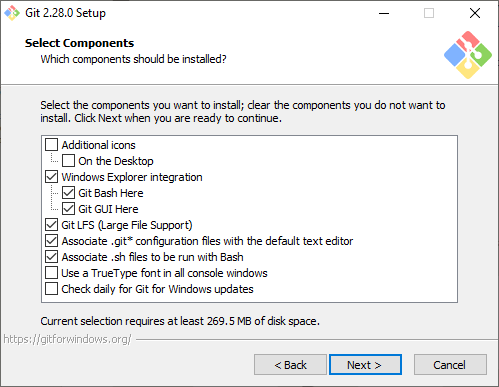
- #INSTALL GIT LFS LINUX HOW TO#
- #INSTALL GIT LFS LINUX INSTALL#
- #INSTALL GIT LFS LINUX MANUAL#
- #INSTALL GIT LFS LINUX SOFTWARE#
#INSTALL GIT LFS LINUX SOFTWARE#
Installing Git from SourceĪ more flexible method of installing Git is to compile the software from source. With Git successfully installed, you can now move on to the Setting Up Git section of this tutorial to complete your setup. You can confirm that you have installed Git correctly by running the following command:
#INSTALL GIT LFS LINUX INSTALL#
With the update complete, you can install Git: The -y flag is used to alert the system that we are aware that we are making changes, preventing the terminal from prompting us to confirm. It will let you install, update, and remove software packages on your server.įirst, use the DNF package management tools to update your local package index. DNF is a package manager that is now the default package manager for Red Hat based Linux systems like CentOS. We will be using the open-source package manager tool DNF, which stands for Dandified YUM the next-generation version of the Yellowdog Updater, Modified (that is, yum). If you are looking for the most recently release, you should jump to the section on installing from source. This option is best for those who want to get up and running quickly with Git, those who prefer a widely-used stable version, or those who are not looking for the newest available options. Our first option to install Git is via CentOS’s default packages. With your server and user set up, you are ready to begin.

To set this up, you can follow our Initial Server Setup Guide for CentOS 8. You will need a CentOS 8 server with a non-root superuser account.

Each of these approaches has their own benefits depending on your specific needs.
#INSTALL GIT LFS LINUX HOW TO#
We will cover how to install the software two different ways: via the built-in package manager and via source. In this guide, we will go through how to install and configure Git on a CentOS 8 server. Many projects’ files are maintained in a Git repository, and sites like GitHub, GitLab, and Bitbucket help to facilitate software development project sharing and collaboration. One of the most popular version control systems currently available is Git. You can track changes, revert to previous stages, and branch to create alternate versions of files and directories. Versioning allows you to keep track of your software at the source level. To stop push failure, LFS support can be disabled in the Project settings, which also disables GitLab LFS value-adds (Verifying LFS objects, UI integration for LFS).Version control systems are an indispensable part of modern software development. Pushes then fail if you have GitLab LFS support enabled. If you choose to use an external LFS store, You might choose to do this if you are using an appliance like a Sonatype Nexus to store LFS data. It is possible to host LFS objects externally by setting a custom LFS URL with git config -f. If you are storing LFS files outside of GitLab you can disable LFS on the project by setting lfs_enabled: false with the projects API.
#INSTALL GIT LFS LINUX MANUAL#
Verify that LFS is installed locally and consider a manual push with git lfs push -all. If LFS pointers are detected, GitLab tries to verify that those files already exist in LFS on GitLab. GitLab checks files to detect LFS pointers on push. More details about various methods of storing the user credentials can be found If you are using OS X you can use osxkeychain to store and encrypt your credentials.įor Windows, you can use wincred or Microsoft’s Git Credential Manager for Windows. This remembers the credentials for an hour, after which Git operations Git config -global credential.helper 'cache -timeout=3600'




 0 kommentar(er)
0 kommentar(er)
